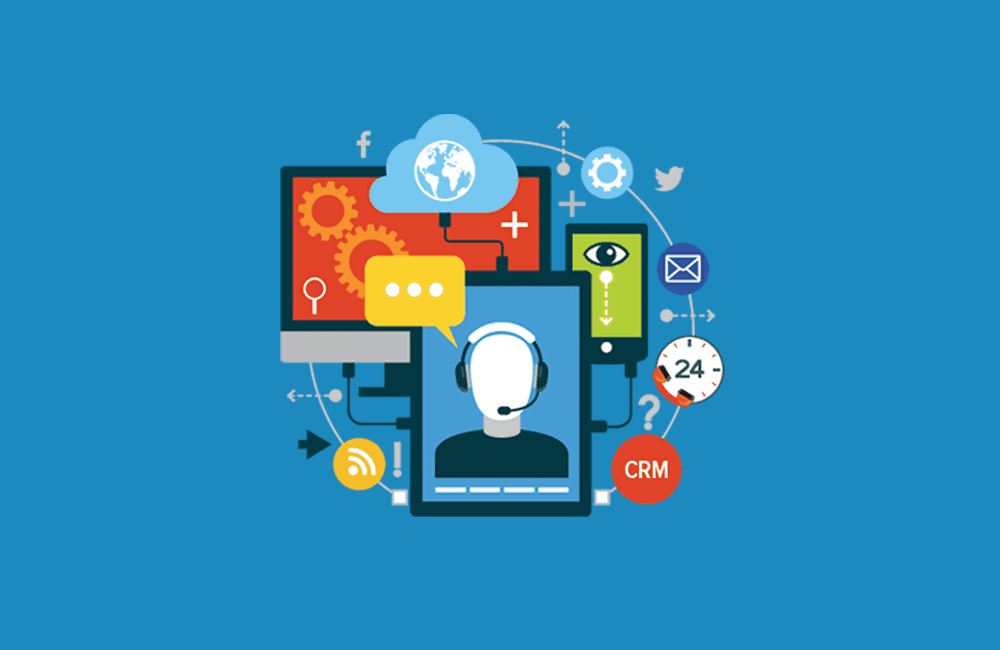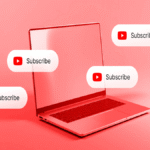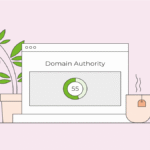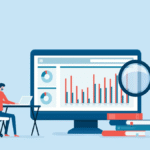Closing that first sale with a prospect is difficult, but it’s worth it when you realize that it may be the beginning of many more sales. Client retention isn’t guaranteed, even while converting a prospect into a client is unquestionably a success. To keep your consumers coming back, you need to maintain it like any other relationship. Customer retention management software may assist your team in managing and refining your initiatives, reducing the likelihood of client breakups.
The term “customer retention management software” refers to a wide range of software that gives companies the means to improve customer satisfaction and foster loyalty to lower customer attrition. Sales, marketing, and customer support teams may accomplish their objectives of interacting with and keeping existing customers with the use of client retention solutions.
Popular Customer Retention Management Software

1. Zendesk
With the aid of Zendesk, an AI-powered customer retention management software, you can establish enduring connections with your clients. Since Zendesk AI is based on more than 18 billion actual customer care encounters, you can get insight into your clients and start using tailored help right now.
Zendesk AI agents are sophisticated bots that can offer round-the-clock assistance, manage even the most intricate client interactions from beginning to end, and provide human agents with a comprehensive picture of your clients. This helps you increase client retention while delighting them at every step with quick, tailored interactions.
Zendesk QA uses AI to improve your CX and helps you manage the quality of your conversations. You may evaluate every client encounter with the aid of AutoQA capabilities, which will provide you with previously unheard-of insights into agent performance and help you make sure your customers are happy. Also, it may assist you in identifying outliers and churn risk so that you can intervene and mend client connections before they go.
Additionally, their AI is integrated with the omnichannel Agent Workspace, enabling your staff to provide cross-channel customer care from a single interface. Furthermore, your team may integrate our service solution with your larger company environment thanks to the more than 1,700 applications and connectors available. To customize interactions and promote upsells and cross-sells, this provides agents with access to critical consumer context across all channels.
Features:
- Activity Dashboard.
- Alerts/Escalation.
- API.
- Collaboration Tools.
- Customer Experience Management.
- Employee Coaching Tools.
- Quality Management.
- Reporting & Statistics.
- Process/Workflow Automation.
- AI/Machine Learning and many more.
Price: Contact sales.
2. Whatfix
Whatfix is a platform for digital adoption that aids users in understanding and integrating applications. Its three primary areas of concentration are analytics that provide organizations with user statistics and actionable insights, a mirror mode that allows customers to try the product in a sandbox setting, and a digital adoption platform (DAP) that places a high priority on user assistance.
With the use of the platform’s customer segmentation tools, companies may organize their clientele according to demographics, tastes, and behavior to target certain groups with their product offerings. A consolidated interface for displaying product analytics, Whatfix’s dashboard gives a quick overview of key performance indicators (KPIs) such as feature uptake and user engagement.
Moreover, user journey monitoring gives them a thorough understanding of how customers interact with the product. It is one of the best customer retention management software.
Features:
- Reporting & Statistics.
- Self-Service Portal.
- Content Management.
- Support Ticket Management.
- Customer Journey Mapping.
- Data Visualization.
- Learning Paths/Tracks.
- Task Management.
- Audience Targeting.
- Interactive Content and many more.
Price: Free plan available, contact for detailed pricing.
3. Hotjar
Hotjar is one of the best customer retention management software and heatmap solutions for websites that aid companies in examining user activity. Its heatmap feature illustrates user activities on websites and apps by highlighting the areas where people click, scroll, and interact the most.
Businesses may utilize this to determine whether parts of their digital assets are popular or troublesome, which helps them make choices about content placement, design enhancements, and general user interface optimization. To find bottlenecks in their website design or customer experience, teams may monitor and capture user sessions in real time.
Companies may use AI to help create and distribute surveys and collect focused feedback. Furthermore, Hotjar offers consumer sentiment analysis tools that are capable of identifying the attitudes and feelings conveyed in user reviews.
Features:
- Performance Metrics.
- URL Customization.
- User Journeys.
- Question Branching.
- Video recording/Transcriptions.
- Click Tracking.
- Visitor Tracking.
- Behavior Tracking.
- Behavior Analytics.
- Reporting/Analytics and many more.
Price:
- Observe: $39/month.
- Engage: $49/month.
- Ask: $59/month.
4. ClickUp
ClickUp offers project management and customer retention analytics and collaboration solutions. Real-time analytics from the platform provide information on consumer engagement and interactions. Companies may measure important performance indicators, keep an eye on consumer behavior, and evaluate how well retention tactics are working.
Businesses may collect targeted consumer data using the product’s Conditional Logic in Forms function, and the forms change according to the user’s previous choices. ClickUp’s whiteboard function, which offers tools for project management, workflow visualization, and brainstorming, may help with team-wide communication and ideation for customer retention. It is one of the most effective customer retention management software.
Features:
- Campaign Management.
- Dashboard.
- Dependency Tracking.
- Display Ad Management.
- Due Date Tracking.
- Employee Activity Monitoring.
- Goal Setting/Tracking.
- Idea Ranking.
- Knowledge Management.
- Markup Tools and many more.
Price:
- Free plan available.
- Unlimited: $10/user/month.
- Business: $19/user/month.
5. Paddle
The paddle provides SaaS and subscription-based companies with customer retention management software. It assists businesses in identifying possible churn concerns using predictive analytics, enabling them to put focused retention measures into place. When users attempt to cancel their accounts, automated cancellation procedures gather information about their reasons for quitting while providing them with tailored offers and discounts.
Businesses may examine how they compare to their rivals by using industry benchmark comparisons, which provide information on how they are doing relative to industry norms. Additionally, the software’s retention audits tool evaluates existing retention tactics and makes suggestions for enhancements. You can also check out our other post on effective customer engagement strategies to explore more ways to connect with your audience.
Features:
- Activity Dashboard.
- Ad hoc Reporting.
- Alerts/Notifications.
- API.
- Audit Management.
- Cash Flow Management.
- Customer Profiles.
- Dashboard.
- Data Import/Export.
- Financial Reporting and many more.
Price: Contact sales.
6. HubSpot CRM Suite
A customer platform called HubSpot CRM Suite may assist companies in comprehending, interacting with, and keeping clients. Marketing, sales, service, content, operations, and commerce are the six main areas of concentration for the software.
Teams may use marketing tools to optimize advertisements, execute social media campaigns, send SMS marketing, and create leads. A perspective of the customer experience, from first contact to continued involvement, is offered by the customer journey analytics function. To respond proactively to possible churn indications, businesses might build up automated processes that are triggered by certain customer behaviors or milestones.
Features:
- Predictive Analytics.
- Real-time Consumer-facing Chat.
- Relationship Tracking.
- For Mac Devices.
- Sales Reports.
- Scheduling.
- Collaboration Tools.
- Source Tracking.
- Task Scheduling.
- Activity Tracking and many more.
Price:
- Free plan available.
- Starter: $20/user/month.
7. Keap
One of the best customer retention management software programs is provided by Keap, a CRM and automation builder for small businesses. Teams may create unique customer retention activities, such as sending a customized email to a client a day after they attended a webinar, using the drag-and-drop automation editor.
While lead capture helps companies with landing pages and providing tailored follow-ups, lead scoring enables teams to rank prospects who are more likely to make a purchase. Businesses can monitor the success of marketing efforts and make necessary campaign modifications, thanks to reporting and analytics tools. Small companies may manage client preferences, payment details, and subscription renewals with the use of Keap’s subscription management function.
Features:
- Campaign Scheduling.
- Prospecting Tools.
- Lead Nurturing.
- Multi-Campaign.
- Third-Party Integrations.
- Data Import/Export.
- Lead Segmentation.
- Customizable Reports.
- Task Management.
- Customizable Forms.
Price: Starting from $299/month (billed monthly) for 2 users.
8. Mixpanel
A product analytics tool called Mixpanel assists teams in obtaining business data from online and mobile apps. Businesses may remain up to date on important user interactions, thanks to their customer activity notifications. Businesses may uncover possible customer churn indicators by setting up real-time alerts based on certain customer actions or engagement patterns.
The frequency of user interaction with a product or service is monitored via behavioral analysis. Businesses may use this tool to find trends, preferences, and possible problems. Furthermore, Mixpanel’s user conversion funnels let businesses track and fix conversion process drop-off spots by graphically representing the customer experience.
Features:
- Performance Metrics.
- Predictive Analytics.
- Multivariate Testing.
- Predictive Modeling.
- Visualization.
- Goal Setting/Tracking.
- Visual Analytics.
- Funnel Analysis.
- Single Page View.
- Customer Segmentation and many more.
Price:
- Free plan available.
- Growth: $25/month.
9. Open Loyalty
Teams may create loyalty programs with the aid of Open Loyalty, a customer retention management application. Teams may use it to customize programs for certain clientele groups. Campaigns that use gamification to reward and incentivize consumer interaction encourage users to connect with the business to accrue points and access special benefits.
Teams may construct automatic incentive systems using trigger-condition-effect logic, such as awarding consumers 100 points for purchases of $100 or more. Additionally, including customer satisfaction surveys gives companies firsthand input from customers on how well their loyalty programs are working.
Features:
- Third-Party Integrations.
- Member Portal.
- Multi-Channel Marketing.
- CRM.
- Customer Activity Tracking.
- Gamification.
- Incentive Management.
- Leaderboards.
- Membership Management.
- Multi-Campaign and many more.
Price: Contact sales.
How To Choose The Best Platform For Client Retention
Choosing the appropriate customer retention management software is crucial since your company has certain requirements. In your selection procedure, take into account a few crucial elements, like:
Give scalability a priority if you want your firm to develop: The retention software you choose should be able to grow with your company without sacrificing functionality. Your investment is future-proofed when you choose a scalable customer retention solution, which also enables your company to modify its client engagement initiatives as it expands.
Choose your method for examining customer behavior: While specialist platforms could concentrate on only one facet of client behavior, other systems, such as Zendesk, concentrate on customer assistance and the whole customer experience. Choose between concentrating on the whole CX or a more condensed picture of consumer behavior.
Determine the most important features: When choosing a partner, determine which aspects of your company would most benefit from enhancement. For instance, you should give priority to CX features that enable you to provide quicker service if your long initial reply time is contributing to customer attrition.
Strive for a low total cost of ownership (TCO): Which includes installation, training, maintenance, and possible scaling costs in addition to the original license or subscription fees. You may learn more about the retention software’s overall financial effect during its life cycle by evaluating the TCO.
You will be in a better position to choose the appropriate program if you keep the aforementioned in mind.
FAQ
Q: What is the management of customer retention?
A: The method by which companies cultivate enduring connections and loyalty with their clientele is known as customer retention management. It emphasizes important measures including profitability, customer lifetime value, and customer turnover.
Q: How is client retention monitored?
A: Monitoring client retention entails looking at your most important data and analytics to learn more about how well your retention tactics are working. You may save your agents time and remove the possibility of user mistakes by having some client retention solutions do these assessments for you.
Q: What impact does E-CRM have on retaining customers?
A: E-CRM involves gathering information about people’s preferences, purchasing patterns, and other characteristics of those patterns. This information is then used to provide tailored services and marketing strategies that increase customer happiness and, ultimately, customer loyalty.







